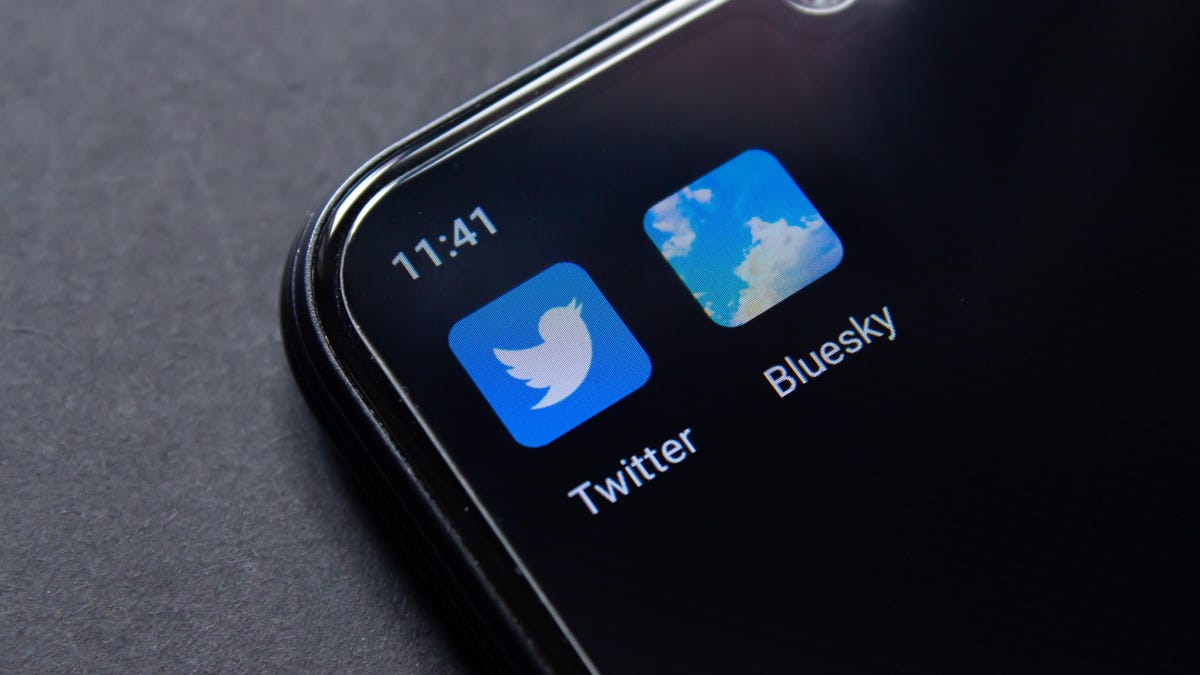The Five Best Twitter Alternatives
Twitter is going to the dogs. Since Elon Musk took over the platform last October, he has made too many questionable decisions to list here, but the lowlights include reinstating the accounts of banned Nazis, charging $8 a month...

Twitter is going to the dogs. Since Elon Musk took over the platform last October, he has made too many questionable decisions to list here, but the lowlights include reinstating the accounts of banned Nazis, charging $8 a month for blue checkmarks that formerly verified a person’s identity and now verify that they have an extra $8 a month, and, over the weekend, limiting the number of tweets users can see each day. (It was previously “all of them,” but now verified accounts can read 6,000 posts a day, unverified accounts can read 600, and new un-verified accounts can see only 300 posts.) In other words, it’s time to go. But go where?
There is no single social media platform that does everything Twitter does (or used to do) while eliminating its worst features, but there are a number of up-and-coming alternatives that provide some aspect of the Twitter experience and/or remove some of the things you hate the most. Here are five of the best Twitter-like networks that could become your new online home.
Mastodon
If your problem with Twitter is the autocratic control Elon Musk has over your (and everyone else’s) media consumption, Mastodon might be the network for you. In place of a profit-driven, top-down organization, Mastodon is open-source, decentralized, and non-profit. Rather than throwing us all in the same melting pot, the social media network lets anyone create or join an independent server. Once you’ve found a server that suits your interests (or chosen the default “Mstdn” server), you can communicate with and follow members of other servers too. This creates a “Twitter like” user experience that’s also de-centralized and Musk-free.
Individualized servers each moderate content in their own way, so there’s no authority that can suddenly decide Nazis viewpoints are OK. Instead, you can choose a server with moderation policies that suit your needs and tastes, from “everything (legal) goes” to “no content from anyone outside this server.”
Despite the technological and philosophical differences, Mastodon’s interface looks a lot like Twitter’s, so the basic functions will be familiar. But the content on your feed is not curated by an unknowable algorithm with motives you do not understand. Instead, you have three feeds: “home” (post from people you follow), “local” (posts from users on your server) and “federated” (all posts from all users.) organized by time-of-post, like Twitter when it was good. This allows you to customize your own experience instead of relying on a billionaire lunatic’s idea of what you should see online.
What’s wrong with Mastodon
Smaller user base: Mastodon has around 10 million registered users, whereas Twitter has around 350 million, so if you like the idea of a being on a platform that everyone else uses, that’s not Mastodon. At least not yet. More complicated: User-customizable experiences are great in theory, but you have to think about them, and lots of people already have enough to worry about it. If your attitude is, “Just shove some memes in front of my eyeballs,” Mastodon will do a lot less shoving.How to sign up for Mastodon
To sign up for Mastodon, you can visit the website or download the Mastodon app from the Apple store or Google Play store.
Post
If you use Twitter to keep up with current events, Post might be the social media network for you. Users there can write and share posts, comment, like, and follow others, just as you would expect. But Post is really a way for publishers to monetize their content. It’s built around a micro-payment system that allows users to buy individual news articles, set up their own personal paywall for content, and to collect “tips” from other users who like your stuff.
Post gives you a way to pay for individual articles from media sources like Fortune, NBC News, Politico, ProPublica, Reuters, and others that are often behind paywalls, so you don’t have to subscribe to the The Boston Globe to read that one article. Even if a news source is free on the web, paying for it on Post allows you to have an ad-free, noticeably less annoying experience, and consume all your news sources on a single feed. Whether the price (usually a few pennies per article) is worth it is an individual choice, of course.
What’s wrong with Post
It’s new. Post’s beta was released in 2022, and it launched for iPhones on June 15, so it’s hard to tell how the actual experience will play out over time. The cost: Eight cents or so for a news article doesn’t seem overburdening, but there’s something about paying anything for information on the internet that rubs many people the wrong way. Potential moderation challenges Allowing users to set up their own payment systems could encourage the most alarming, click-baity kind of content. If Post takes off, the moderation system will have to thread the needle between “we welcome every voice” and “well, not actually this voice” in a way that has proven quite difficult for platforms in the past.How to sign up for Post
To join the Post network, visit the sign-up webpage or download the app from the App Store.
Threads
If you don’t like Twitter, but want a social media network that’s just like Twitter, Meta’s Threads might be the choice for you. Threads just launched this week, and it’s main difference from Twitter seems to be that it’s run by a different megalomaniacal billionaire. You’ll be able to post things, comment, like things, message people, yadda-yadda—the philosophy seems to be “if it ain’t broke, why fix it?” (Except it is broke.)
One difference that might prove interesting: Meta promises that users will have more control over their content by giving them choices in how the Threads algorithm populates feeds. So if you trust Meta’s word on serving their users’ interests, (and why wouldn’t you?) it might provide a less horrific experience than Twitter. For now, though, users’ feeds are populated by content that the algorithm thinks you’ll like, and you can’t limit your feed to just the accounts you follow.
Another advantage of Threads is its potential audience. Since it will be connected with Instagram’ user-base of around 1.5 billion people, expect a quickly populated social media network. Threads also will likely be more stable than upstart, DIY-style social media networks, as it has the knowledge and money of Meta behind it.
What’s wrong with Threads?
It’s a Twitter-clone from the makers of Facebook. While Meta chief product officer Chris Cox reportedly said the platform will be “sanely run,” even prelaunch, the service’s privacy problems have drawn criticism: No less august a personage than Twitter founder Jack Dorsey posted a screenshot of the data that may be collected by Threads, including health and financial information, your contacts and location, and that ominous catchall, “sensitive info.” No bueno.How to sign-up for Threads
From your Instagram account, you’ll see a Threads logo that you can use to sign up and download the app.
Bluesky Social
Created by Twitter co-founder and former CEO Jack Dorsey, Bluesky Social is a decentralized social media platform that aims to give users more control over the content they create and their feeds. The network hasn’t fully launched yet—it’s in the “invitation only” beta stage—but according to pre-launch users, it looks and works like Twitter, but with a key difference: Users will be able to take their content with them if they leave. All your posts, friends, messages, and more can come with you when some crazy person takes over Bluesky—as long as you migrate to a hypothetical network that uses the same networking technology. (This excludes Mastodon.) The decentralized nature of the service will also make it harder to collect and sell your data, serve ads to you, and otherwise be awful—in theory anyway. Since Bluesky hasn’t launched yet, it’s hard to tell how it will work in practice.
What’s wrong with Bluesky Social
Complexity: Decentralized social media networks sound like a great idea, but many users just don’t care, and are looking for an experience that’s as easy-to-use possible. There is a very real possibility that Bluesky will only be used by tech-heads, media folks, and others with a special interest, and never break into the mainstream. That means a smaller audience, leading to less use, and that familiar swirling-down-the-drain phenomenon many “hot new thing” social networks have suffered in the past.
How to sign up for Bluesky Social
Bluesky social hasn’t launched to the public yet, but if you visit the official site, you can sign up for the waitlist. You can also beg for an invite code on Twitter or buy one on eBay for about $20.
Spill
Yet-to-launch social media network Spill is making waves on Twitter, with the name going viral this week in response to Musk’s decision to rate-limit Twitter’s users. The app has a unique vibe—the name references “spilling the tea” (ie: gossiping), and it eschews social media’s usual “appeal to everyone” philosophy by taking serious steps to moderate hate and create a more friendly platform for diverse users. According to its creators, ex-Twitter employees Alphonzo “Phonz” Terrell and DeVaris Brown, Spill will foster a safe atmosphere for “culture drivers” to thrive, or, as Kemi Marie tweeted, “The Spill app is Black as fuck. I love that.”
What’s wrong with Spill
I can’t get in: I have no doubt the content already being posted to Spill is more interesting than Twitter, but for now, Spill isn’t open to the public. It’s invite-only, so if you don’t know someone, you can’t get in. File it under “intriguing possibility.”
How to sign up for Spill
You can’t. You can join the Spill waitlist, though.

 Koichiko
Koichiko 
































![Run An Ecommerce SEO Audit in 4 Stages [+ Free Workbook]](https://api.backlinko.com/app/uploads/2025/06/ecommerce-seo-audit-featured-image.png)